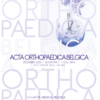Vertebral sarcoidosis: diagnosis to management
Sarcoidosis; spine; diagnosis; imaging; treatment
Published online: Feb 17 2023
Abstract
Sarcoidosis is a systemic inflammatory granulomatous disease that can develop in almost any organ system. Rheumatologists may encounter sarcoidosis in different situations varying from arthralgia to bone involvement. While the peripheral skeleton was a frequent location, data regarding axial involvement is scarce.
Most patients with vertebral involvement have a known diagnosis of intrathoracic sarcoidosis. They tend to report mechanical pain or tenderness over the involved area.
Imaging modalities, particularly Magnetic Resonance Imaging (MRI), are a mainstay of axial screening. It helps exclude differential diagnoses and delineate the extent of bone involvement. Histological confirmation combined with the ap- propriate clinical and radiological presentation is the key of diagnosis.
Corticosteroids remain the cornerstone of treatment. In refractory cases, methotrexate is the steroid- sparing agent of choice. Biologic therapies may be used, although the evidence base for their efficacy is bone sarcoidosis controversial.
